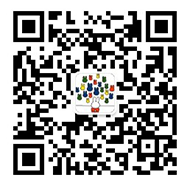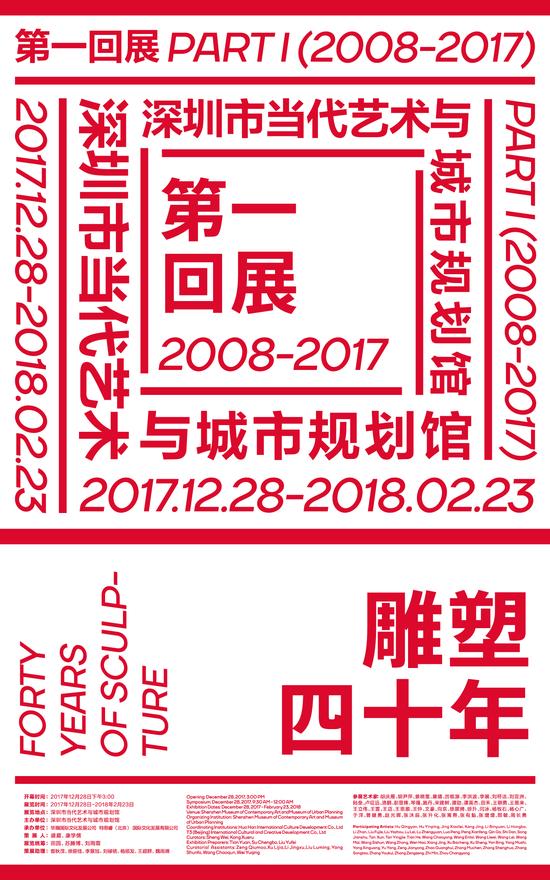
参展艺术家(按姓氏笔画排序): 曾健勇、胡庆雁、胡尹萍、景晓雷、康靖、李洪波、李展、厉槟源、刘符洁、刘亚洲、卢征远、陆垒、洛鹏、彭显峰、琴嘎、施丹、宋建树、谭勋、谭英杰、田禾、王朝勇、王恩来、王雷、王立伟、王迈、王思顺、王钟、文豪、向京、徐跋骋、徐升、闫冰、杨牧石、杨心广、于洋、张沐辰、张升化、张嵩焘、张有魁、张增增&零屿数码、赵光晖、郅敏、周长勇
2018年,恰逢改革开放40年,在这40年的历史进程中,我们的伟大祖国发生了翻天覆地、日新月异的重要变化,深圳作为改革开放的示范先驱不断更迭记录着这一进程,中国雕塑同样也取得了极其重要的开拓性成就。为纪念改革开放40年,展现雕塑领域创新成果,推动雕塑艺术不断繁荣发展,丰富人民群众文化艺术生活,深圳市当代艺术与城市规划馆经过精心筹备,举办“雕塑四十年”系列展。该展将由盛葳、康学儒担纲策展人。系列展将从2017年底至2018年,分4个部分倒叙进行,逐步与广大观众见面。每个部分将遴选该时期具有历史意义的代表性雕塑家的代表性作品以及部分经典个案,在深入研究和总结的基础上,进行深入研究、有机组织和展示。一方面,梳理总结40年来当代雕塑具有代表性的成绩与发展线索,另一方面,面向未来探寻中国雕塑最新的发展方向与可能。
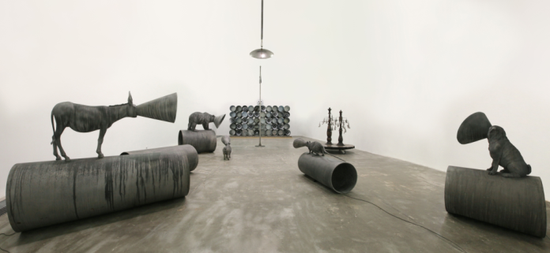 陆垒 《佯装自大狂》 2015 铝、莫尔斯码控制器、白炽灯、腐蚀铸铝雕塑表面、莫尔斯码控制白炽灯泡闪烁 尺寸可变
陆垒 《佯装自大狂》 2015 铝、莫尔斯码控制器、白炽灯、腐蚀铸铝雕塑表面、莫尔斯码控制白炽灯泡闪烁 尺寸可变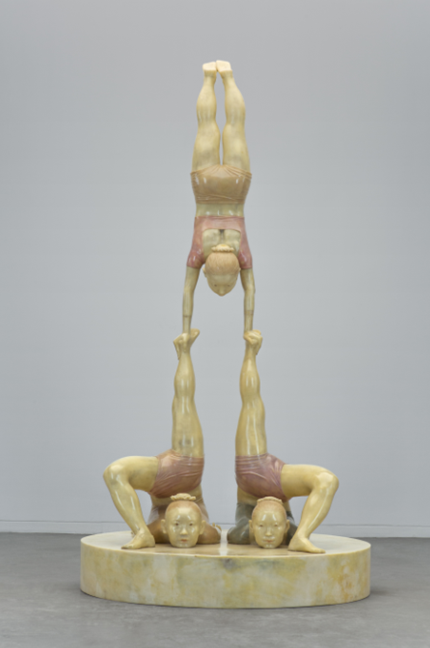 向京《三位一体》 2011 玻璃钢着色 150×150×261CM
向京《三位一体》 2011 玻璃钢着色 150×150×261CM第一部分将集中展现1978年至1992年中国雕塑的创作成果。1978年以后,随着改革开放的潮流,整个艺术界呈现出几代同堂,竞相创造的局面。雕塑创作开始突破单一领袖像的模式,重新开启了现代化的进程。第二部分将集中展现1992年至2000年中国雕塑的创作成果。这一时期是改革开放的深化期,一方面城市化进程大大加速,城市公共雕塑大规模出现,另一方面,对外开放和全球化又使得雕塑的探索开始吸收包括海外雕塑在内的新成果。第三部分将集中展现2000年至2008年中国雕塑的创作成果。千禧年以后,新的理念和手段不断涌现,使得这一时期的雕塑创作呈现出极其多元的态势。加入WTO、北京奥运会的举办等重大事件,也为雕塑探索提供了必要的支持。第四部分将集中展现2008年至2017年中国雕塑的创作成果。在这个后奥运时代,互联网+、移动终端的普及、电子商务的繁荣成为大趋势,当代雕塑家与世界的互动呈现出更加明显的趋势。突破雕塑即有本体观念,从观念艺术的角度重思雕塑成为新的探索方向。
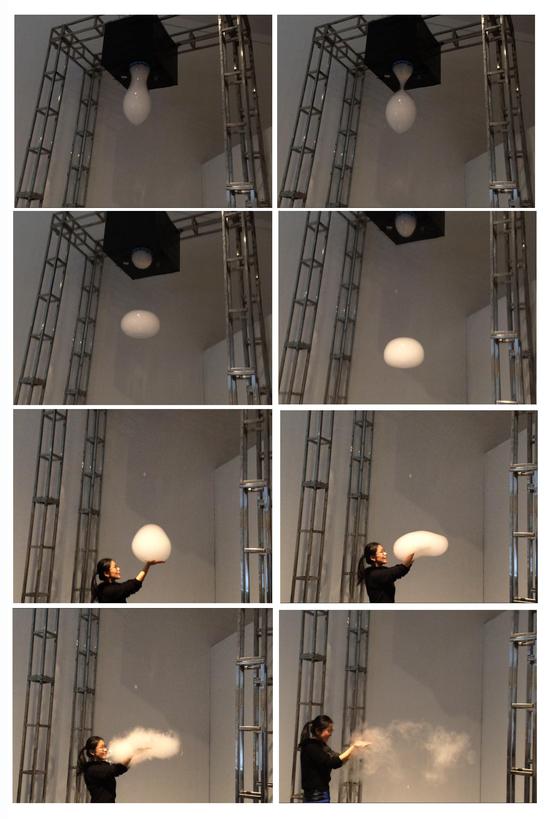 彭显锋《云工厂》 2016 综合材料 尺寸可变
彭显锋《云工厂》 2016 综合材料 尺寸可变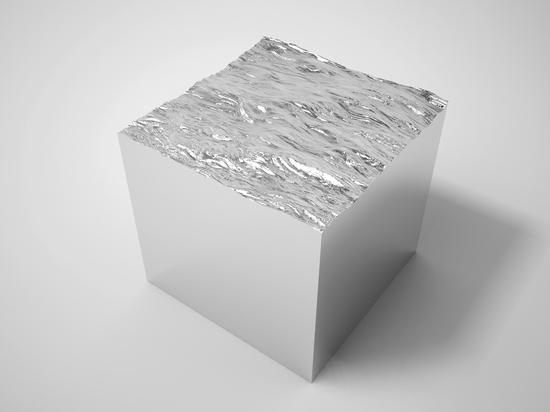 田禾《水》 2015 不锈钢 100×100×100CM
田禾《水》 2015 不锈钢 100×100×100CM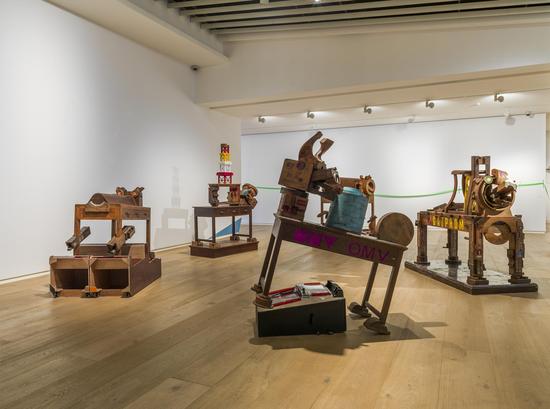 王迈《西天取经 NO.2》 2012-2014 核桃管、PVC管、798旧木模、游戏机、木台、工具桌 170×190×100CM(7件)组合尺寸可变
王迈《西天取经 NO.2》 2012-2014 核桃管、PVC管、798旧木模、游戏机、木台、工具桌 170×190×100CM(7件)组合尺寸可变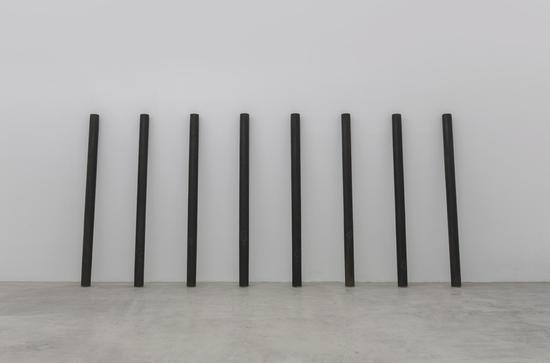 闫冰《爱》3号 2015 铁、麦子 240×13 CM共8件
闫冰《爱》3号 2015 铁、麦子 240×13 CM共8件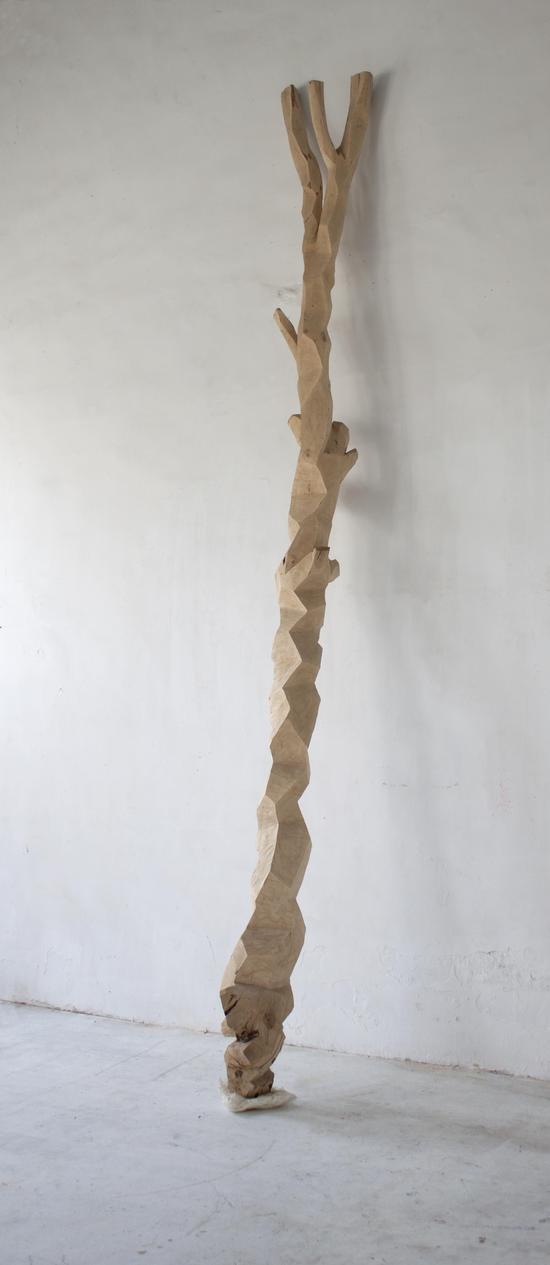 杨心广《肖像系列之老李》2013木、漆 60×60×450CM
杨心广《肖像系列之老李》2013木、漆 60×60×450CM该系列展的第一个部分将于2017年12月28日在深圳市当代艺术与城市规划馆开幕,正式面向公众开放。当日开放的展览包括“雕塑四十年·第一回展(2008-2017)”、“雕塑四十年·田世信个案研究”两个子项目:

“雕塑四十年·第一回展(2008-2017)”是在集中考察2008年至2017年中国雕塑的现场与成绩的基础上,聚焦于与雕塑历史的连接性以及聚焦未来的探索性,遴选具有代表性的43位优秀当代青年雕塑家参展。展览将分为“今天,什么是雕塑?”、“日常与美学的分界线”、“观念遗产与媒介视野”3个单元进行展览主题的讨论和展示。作品类型不仅包括传统意义上的雕塑,还包括聚焦于“雕塑”观念的新媒介、新技术、新材料创作。第一个单元“今天,什么是雕塑?”聚焦于“雕塑”如何成为当代艺术家们探索的一个“观念”,一个带有哲学意义的范畴。第二个单元“日常与美学的分界线”主要展现了“雕塑”如何成为一个在“日常”与“美学”之间的震荡过程。第三个单元“观念遗产与媒介视野”则显示了当代雕塑如何接受上世纪六七十年代后前卫运动中观念艺术遗产的直接影响,以及技术和媒介的发展,尤其是录像和互联网手段,对青年雕塑家创作的改变。

“雕塑四十年·田世信个案研究”聚焦于对雕塑家田世信创作经历和创作成果的回顾、总结、梳理与研究。田世信的创作题材和内容非常广泛,在艺术界、学术界和全社会都有重要深刻的影响。展览将主要根据历史线索和题材分类交叉的方式分为4个单元进行展示。第一个单元“坐言起行”主要关注田世信早期的创作历程、对自我和家庭的观照。第二个单元“殊方未远”主要呈现田世信在贵州工作期间对少数民族题材的创作。第三个单元“道成肉身”主要是人体类作品,集中体现艺术家对身体与精神关系的思考。第四个部分“悲怆古风”主要呈现艺术家对历史人物题材的思考和创作。展览将以80余件作品,结合文献和手稿进行立体展示。
 1988年 《秋瑾》之二(大头像) 铜 62x70x120cm
1988年 《秋瑾》之二(大头像) 铜 62x70x120cm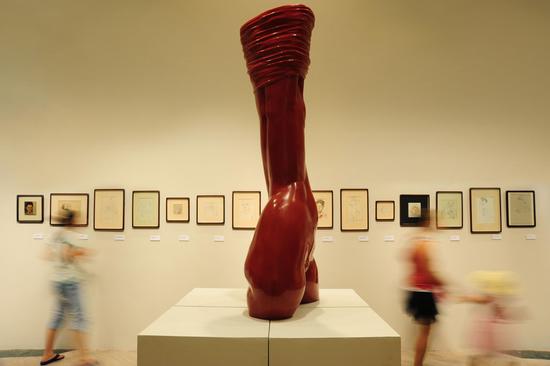 《大躯干》 大漆 68x66x163 1993年
《大躯干》 大漆 68x66x163 1993年 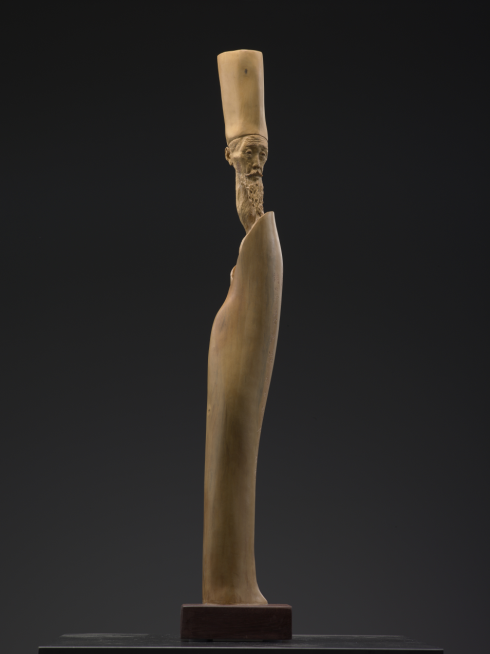 2015年 《陶渊明》(木雕)60x7x6黄杨木
2015年 《陶渊明》(木雕)60x7x6黄杨木此外,本次展览还将邀请十余位知名美术史家、美术评论家、雕塑家等专家共同参与,举办“雕塑新视界:雕塑四十年·第一回展(2008-2017)暨田世信个案研究学术研讨会”,以深化对展览的学术研究,并为当代青年雕塑建言献策、共谋发展。
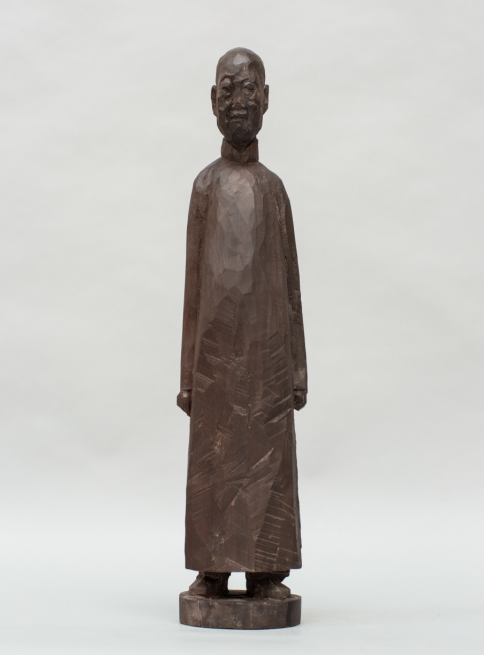 2016《吴昌硕》74x16x12 阴沉木
2016《吴昌硕》74x16x12 阴沉木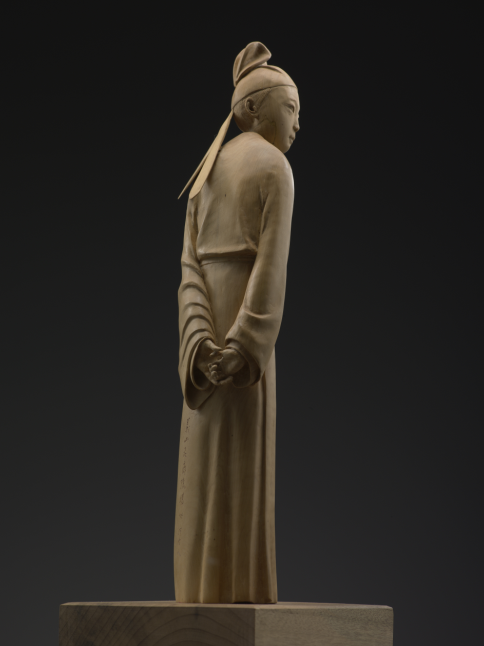 2016年 《李商隐》39x9x7 黄杨木
2016年 《李商隐》39x9x7 黄杨木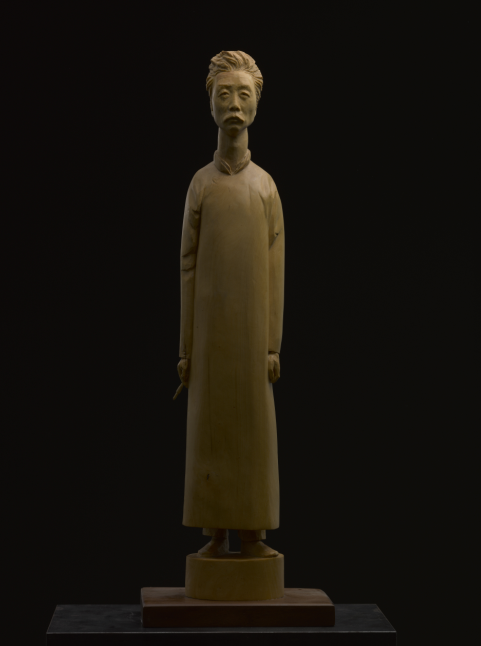 2016年《鲁迅》51x10x6.5 黄杨木 (2)
2016年《鲁迅》51x10x6.5 黄杨木 (2)据悉,本次展览将跨越农历新年,于深圳市当代艺术与城市规划馆展出至2018年2月23日。深圳市当代艺术与城市规划馆是深圳市政府与中海地产携手建设的“公益性、学术性、服务性”的非营利机构,是深圳市当代艺术与城市文化传播、传承、建设的重要载体。
“Forty Years of Sculpture”
Press Release
2018 marks the fortieth anniversary of the launch of Reform and Opening。 In these forty years, our great nation has undergone earth-shaking change, and Chinese sculpture has similarly made important, pioneering strides。 In order to commemorate forty years of Reform and Opening, present the latest developments in sculpture, promote the success of Chinese sculpture, and enrich the cultural and artistic life of the people, the Shenzhen Museum of Contemporary Art and Museum of Urban Planning has organized “Forty Years of Sculpture。” Curated by Sheng Wei and Kang Xueru, “Forty Years of Sculpture” will be presented to a broad audience in four parts from late 2017 to 2018, with the history narrated from the present to the past。 Every part showcases key works by important sculptors from that period, as well as several case studies, organically organized and presented on the basis of thorough research and summary。 The exhibitions will review important achievements and trends in Chinese sculpture over the last forty years, but they also look to the future to explore the new developments and possibilities for Chinese sculpture。
The first part presents Chinese sculpture from 1978 to 1992。 After Reform and Opening began in 1978, the art world entered a new era of competition between multiple generations of artists。 Work in sculpture began to break with monotonous depictions of the leadership, and Chinese sculpture once again began to modernize。 The second part presents Chinese sculpture from 1992 to 2000。 This period saw the deepening of Reform and Opening, which greatly accelerated urbanization and led to a surge in urban public sculpture。 At the same time, globalization and opening to the rest of the world meant that Chinese sculpture began to absorb new modes, including those from abroad。 The third part presents Chinese sculpture from 2000 to 2008。 After 2000, new ideas and methods appeared, which gave the sculpture of this era an immense diversity。 Major events such as China joining the WTO and the Beijing Olympics also provided support for the exploration of sculpture。 The fourth part presents Chinese sculpture from 2008 to 2017。 In the post-Olympic era, Internet plus, mobile devices, and thriving e-commerce became part of everyday life, and Chinese sculptors began interacting more with the rest of the world。 Artists broke with existing concepts of sculpture, or came to see sculpture as a new exploratory avenue within conceptual art。
The first part of this exhibition will open to the public on December 28, 2017 at the Shenzhen Museum of Contemporary Art and Museum of Urban Planning。 Two exhibitions in this series will open that day: “Forty Years of Sculpture: Part I (2008-2017)” and “Forty Years of Sculpture: A Case Study of Tian Shixin。”
“Forty Years of Sculpture: Part I (2008-2017)” examines the sites and accomplishments of Chinese sculpture from 2008 to 2017, while also focusing on the connections to the history of sculpture and the explorations of the future through the work of 44 important young contemporary sculptors。 The exhibition is divided into three sections, in order to discuss and present the themes of the show: “What is Sculpture Today?” “The Boundary Between the Everyday and the Aesthetic,” and “Conceptual Legacies and Media Visions。” In addition to traditional sculptures, the exhibition will showcase new media, new technologies, and new materials in sculpture。 The first section “What is Sculpture Today?” focuses on how sculpture has become a concept and a category with philosophical meaning to be explored by contemporary artists。 The second section “The Boundary Between the Everyday and the Aesthetic” primarily presents how sculpture has come to waver between the everyday and the aesthetic。 The third section “Conceptual Legacies and Media Visions” shows how contemporary Chinese sculpture has been directly influenced by the legacy of conceptual art from the international avant-garde art movements in the 1960s and 1970s。 It also reflects how the development of technology and media, particularly the methods of video and the internet, has changed the work of young sculptors。
“Forty Years of Sculpture: A Case Study of Tian Shixin” focuses on reviewing, summarizing, organizing, and studying the creative experiences and artworks of the sculptor Tian Shixin。 The themes and content of Tian Shixin’s work are very broad, and he had an important and profound influence on the art world, the academic community, and all of society。 The exhibition primarily presents these works across four sections based on historical themes and subject matter。 The first section “No Sooner Said Than Done” showcases Tian Shixin’s early work, and references from the artist and his family。 The second section “Distant Lands Are Not So Far” presents Tian Shixin’s work on ethnic minority themes from his time in Guizhou。 The third section “The Way of the Body” shows Tian’s figural works, bringing together his ideas on the relationship between body and spirit。 The fourth section “Sorrowful Antiquity” shows the artist’s ideas and works related to historical figures。 The exhibition is a full presentation of more than 80 works, as well as documents and drafts。
This exhibition will extend into next year, lasting until February 23, 2018。 In addition, a dozen noted art historians, art critics, and sculptors will be invited to participate in “A New Vision of Sculpture: An Academic Symposium on ‘Forty Years of Sculpture: Part I (2008-2017)’ and ‘A Case Study of Tian Shixin’” which will further the academic research conducted for this exhibition and offer advice and opportunities to young Chinese contemporary sculptors。



